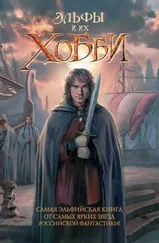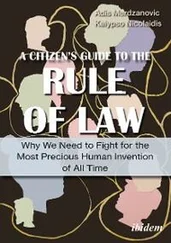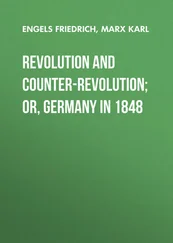Romania’s role in the war was so fickle and so bizarre that during World War II it had the dubious distinction of being the third most powerful Axis country and the fourth most powerful Allied army. Romania allied itself with everybody at the party but still went home with no friends.
Ion Antonescu— this brutal dictator of Romania, known as the “Conducător,” led Romania into the attack on the Soviet Union to regain Transylvania, stolen the year before by the wily Hungarians.
Skinny — Personal slogan was “Death before Dishonor.” He managed to obtain both.
Props — Hitler loved him. He got the big picture about who really should be controlling the world, the Germans and the Romanians.
Pros — Had blue eyes so Hitler assumed he came from good Aryan stock.
Cons — Eager participant in the Holocaust.
Lt. General Carl A. “Tooey” Spaatz— one of the most decorated air commanders in U.S. history, he held the title of Commander of the United States Strategic Air Forces in Europe and was the architect of the strategic bombing raids on the Axis countries.
Skinny — Prepped Europe for its postwar revitalization by bombing its cities flat.
Props — Was present at the surrender of all three Axis powers.
Pros — Never promised to bomb an enemy back to the Stone Age despite directing the dropping of two atomic bombs on Japan.
Cons — Became a writer after the war.
King Mihai of Romania— He became the Romanian king at age nineteen in 1940 when Ion booted his anti-German father King Carol from the country.
Skinny — Did nothing as king for four years as his country fought a devastating war.
Props — Last surviving head of state from World War II. Great-great-great grandson of Queen Victoria of England.
Pros — Before his country got crushed by the Russians he surrendered to them.
Cons — He assumed the Soviets would forgive Romania for invading, looting, pillaging, and killing. Wrong! Also assumed the Americans and British would give him credit for taking on the Germans at the end of the war. Wrong Wrong!!
It was not easy being Romania in 1939. On one side the German menace, aggressively looking to stomp on anything that moved. On the other side the growling bear of the Soviet Union. In this tough neighborhood it was important to make the right friends.
Romania, in its first attempt at making friends and influencing people, had shrewdly waited until World War I was three years old before joining the Allies, hoping to cherry-pick from the victors’ spoils. The vastly more powerful Germans and Austrians smashed the Romanians. But like the little engine that could, Romania did not give up. Instead, the tiny country manned it out and lost more territory to the Germans before finally calling it quits in early 1918. When Germany collapsed later that year, Romania regained its fighting mojo and again joined the fray, hoping it would be easier to defeat an already conquered enemy. This short second fling so impressed the hard-pressed Allies that Romania won itself a seat at the peace talks in Paris where the spoils were carved up, and it walked away with an outsized share of the local swag. In this case, the minuscule country got enough territory, including Transylvania, to create Great Romania. All was well. Romania had chosen right.
During the 1930s, as German power grew and sovereign neighbors disappeared with little resistance, Romania’s leader, King Carol II, a former playboy, became increasingly nervous. When World War II broke out in Poland in 1939, Romanians feared their little corner of Europe would be the next entrée for Hitler. Romania’s only safeguard was to ally with the British and the always-eager-to-make-agreements-it-can-never-honor French. But in 1940 when Germany defeated France and threw Britain off the continent, Romania was on its own.
Romania faced its own volatile political mixture. King Carol had ruled since 1930 with a strong hand. But the driving force in the country’s politics was the Iron Guard: religious fanatics, right-wing nuts, and violent anti-Semites. Unsurprisingly, they were much loved by the always-on-the-lookout-for-thugs-who-like-to-kill-the-helpless, Heinrich Himmler of the German SS. The Iron Guard was like a posse of Bible-toting SS thugs. They were not happy with Carol and probably wouldn’t have been happy with Hitler, either.
Fearing an Iron Guard takeover and unhindered by such notions as fair play, King Carol suddenly showed some impressive fascistic chops by orchestrating the assassination of the Iron Guard leader Cornelius Codreanu in 1938 and outlawing the group. Carol also excluded General Ion Antonescu, the head of the army and former defense minister, from his government. In May 1940, with Poland already conquered by Hitler and the collapse of the west imminent, King Carol wrapped up a treaty with Germany giving the Nazi war machine access to Romania’s plentiful oil. The king, believing his hard work was done, was now able to relax and get back to his real interests, living the high life amid the gathering storms of total war.
Teaming up with the Nazis somehow angered the Soviets, so in June of 1940 the Reds grabbed two northern Romanian provinces, Bessarabia and Northern Bukovina, primarily because the Russians didn’t already control them. Hungary, with Hitler’s approval, then jumped into the land grab and took most of Transylvania in August. And in September, Bulgaria took a cheap shot at its northern neighbor and reclaimed the area of Dobrogea. In all, Romania lost about one-third of its territory and population. The country had now become Less Romania.
Ion denounced the king over the humiliating loss of territory and prestige, so Carol dismissed him from the army and tossed him into prison. But this could not prevent the population from realizing their country was shrinking and party boy King Carol started to catch the blame. Demonstrating that even louche kings read polls, he desperately sprung Antonescu from prison directly into the prime ministership in September 1940. As a show of gratitude, Antonescu squeezed Carol to abdicate and flee the country. Carol reputedly loaded up a train with royal swag and decamped to Portugal. With the backing of the army, Ion grabbed dictatorial powers and appointed as his deputy the head of the Iron Guard. Touché! The circle of lunacy was complete again, for the moment.
With the instincts of a true dictator, Ion burned to see the day when he could extend his irrational rule over the ancient homeland of Romanians, Transylvania, as well as the other stolen territories. The problem, however, was that the lost lands were held by two opposite sides of the war. But Ion, starting to warm up to his job as dictator, began to limber up with some Houdini-like reversals and escapes of his own. He soon came up with a plan to fix Romania’s territorial problems by throwing his lot in with Hitler.
In November 1940, Ion met with Adolf in Germany. In dictator-to-dictator talks, Antonescu ranted about the Jews, Slavs, and Hungarians. The two got along great. Hitler found the Conducător to be an eager ally. He bonded with the German generals. They in turn had little difficulty recognizing the rampant greed of a true sucker. Ion gleefully accepted an invitation to join the Axis.
In January 1941, Horia Sima, the head of the Iron Guard, was unable to repress his deep-rooted, coup-making urges and tried to overthrow Antonescu. Hitler preferred the order of Antonescu to the anarchy of the Iron Guard and supported Antonescu in crushing the coup. Sima and the other Iron Guard leaders were whisked away by Himmler and stashed in Germany in preparation to take over Romania if Antonescu turned woolly-headed on them. Ion now ruled alone.
Читать дальше












